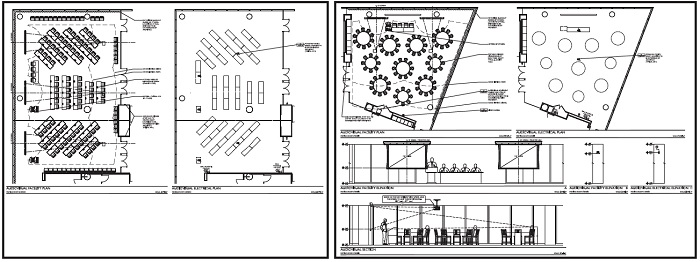The Basics of Boardroom Audio

Making sure your end-users aren’t bored with boardroom audio.
By their name, boardrooms are where an organization’s top people meet to tackle its top priorities. They’re highly paid, so when bad audio means they have to keep repeating themselves or taking breaks due to conferencing fatigue, a lot of money is wasted.
To avoid those problem consider the following three tips.
Don’t skimp on price
For example, buy quality mics of the right type and make sure there’s enough of them so there’s always one right by each person.
“If you’re using ceiling mics, make sure they’re the right pattern for how far they are from the people speaking,” said Justin O’Connor, Biamp Systems audio product manager. “Table top is a great way to go to have closer micing.”
Limited budget? One alternative is wireless mics, which make it easier to get a small number of mics in front of a large number of people. Wireless mic systems also can be carted into other meeting spaces to maximize usage and thus return on investment.
A daily selection of features, industry news, and analysis for tech managers. Sign up below.
Follow their eyes
How many of your boardroom meetings include remote video participants? The answer affects the room’s audio design.
“With the addition of video to the boardroom, the ‘Knights Of The Round Table’ concept has become ‘The Knights Of The U-Shaped Table’ or even ‘The Knights Of The Classroom Arrangement,’” said Perry Goldstein, MXL sales and marketing director. “The meeting is more focused on the monitor in the front of the room instead of each other. This has profoundly changed the method in which audio is captured."
These drawings by CMS AudioVisual show recent multi-purpose room projects (the rooms are combinable with a control system command through the Media Vision TAIDEN HCS-5300MX room combiner). There was a second multi-purpose room within this project (Capitol Room). According to Patrick Herlihy, Media Vision’s Director of Sales — North America, what is interesting about the second drawing is the “round table” room setup, which is difficult to achieve without wireless mics.
“Conference rooms were once dominated by the speakerphone, which was a 360-degree mic, with echo canceling and built-in speaker. Today there is less and less need to capture a 360-degree conference. Everyone is facing the front of the room, and there is a large gap where the meeting leader used to be.”
A pinhole mic in the display won’t do an effective job of capturing the room’s participants, especially in larger spaces. Better solutions include a gooseneck mic at each seat or a lavaliere mic for each person.
“In larger boardrooms with larger numbers of people, strategically placed shotgun mics hooked up to a DSP and mixer is a good method,” Goldstein said. “Once you enter into this solution, an experienced audio engineer is suggested. When there are multiple mics each picking up a large area, echo can occur, which requires digital processing to eliminate the echo. If you add ceiling mics, digital noise reduction must be added to get rid of ambient noise from the ventilation system.
“This can be a fairly expensive situation. It’s worth the money, as quality audio is essential. Just be aware of this in advance, and budget for it.”
Hang some art
Boardrooms often are filled with hard surfaces, such as wood-paneled walls or floor-to-ceiling windows. Those create reflections, which undermine intelligibility. Carpet doesn’t do much to absorb that reverb, but acoustical treatments usually do. To preserve aesthetics, consider adding a few pieces of art, such as canvas paintings with batting behind them, or fiber art.
“You’d be surprised by how much a 6- x 4-foot canvas can do, even in a large room,” O’Connor said. “Just one piece can make a big difference.”
